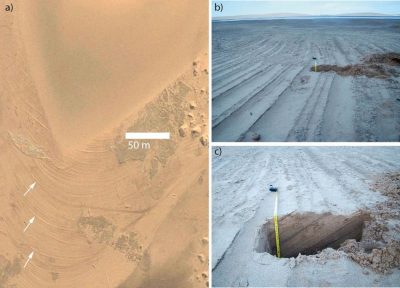
Figure 1. a) Features found on Mars, b) and c) features found in Namibia.
European scientists M.C. Bourke and H.A. Viles from the University of Dublin and the University of Oxford, have been studying coastal dunes in Namibia because they are similar to features that have been found on Mars. Based on their studies, they have hypothesized that the Martian valley features were formed from salts left behind after the groundwater evaporated. In Namibia, the scientists found features formed from migrating sand dunes, which were then covered by salts left from fluctuating amounts of evaporated groundwater. The valley on Mars also shows evidence of fluctuating amounts of salty groundwater. The scientists think that the water on Mars was present not very long ago, so it could be a good place to search for possible life on the planet.
The photograph of the features on Mars look a lot like the cross section of the dunes on the Wilbur Cross columns. The photograph shows the same curved laminations, except on a much bigger scale. The dunes in Namibia also look similar to what we saw in lecture and in lab. The cross section shown in c) shows dipping strata and the ridges on the surface shown in b) are long and linear features. This is characteristic of waves or back and forth motion, which we also saw on sample 20 in lab.
This is a very interesting application of sedimentology. Even the planetary sciences call for the study of sediment and sedimentary structures. Knowing what causes certain sedimentary structures to form on a planet surface can help scientists learn about what processes are occurring on different planets. This can then lead to discovering the presence or historical presence of water, and possibly extraterrestrial life.
https://www.inverse.com/article/27904-martian-valley-water-extraterrestrial-life